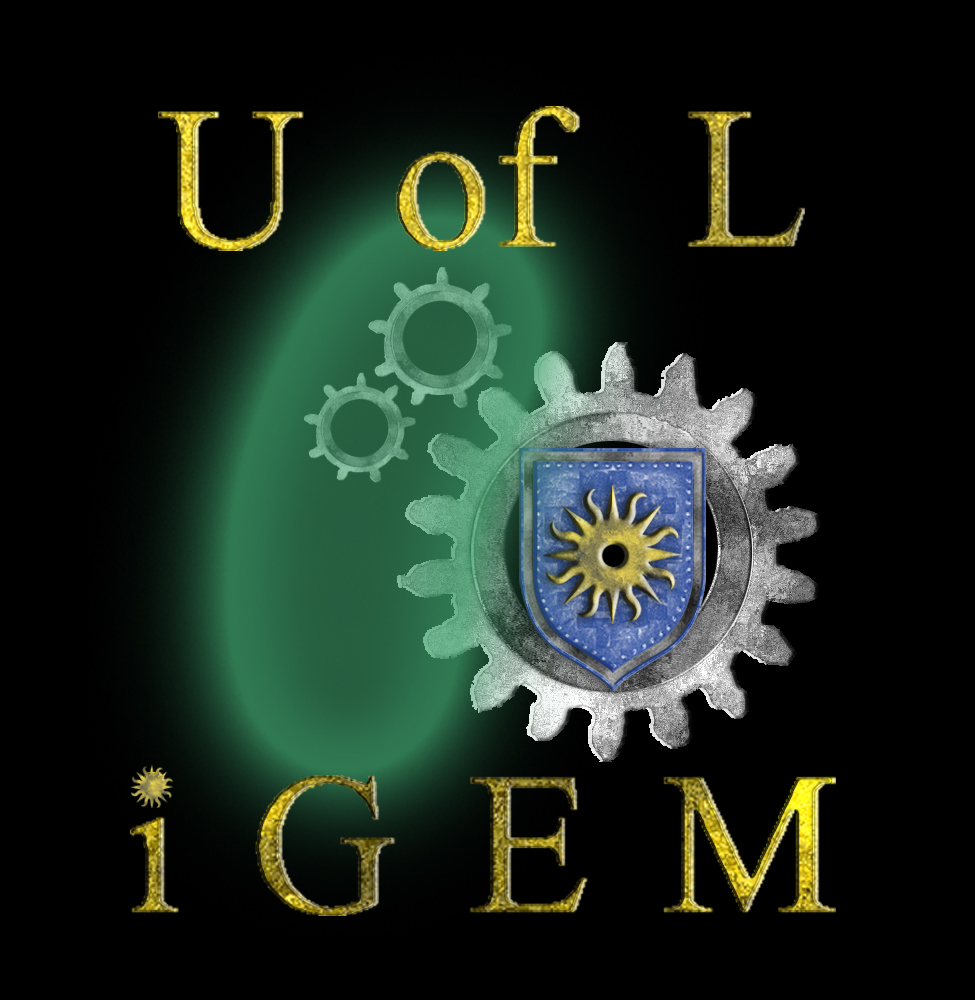Team:University of Lethbridge
From 2008.igem.org
David.franz (Talk | contribs) (Changed to new visual scheme) |
(→Our Project) |
||
| Line 37: | Line 37: | ||
| - | ==<span style="background-color:#000000; color:white">Our Project</span>== | + | ==<span style="background-color:#000000; color:white">Our Project: "Bacuum" Cleaner</span>== |
| - | + | ||
| + | The tailings ponds used to house discarded mining refuse from the oil refineries pose a major environmental dilemma. The problem arises with being unable to collect and degrade the compounds which make up these toxic soups. These toxic and often corrosive water beds not only affect the local environment but can also cause severe repercussions to other ecosystems as much of the wildlife relies on getting their food and water from the now disrupted bionetwork. These tailings ponds are often laced with heavy metals and dangerous chemicals, such as toxic aromatic hydrocarbons which are difficult to breakdown. Despite the efforts of the corporations responsible, some of these chemicals can leech into and contaminate the surrounding ground water and soil. | ||
| + | |||
| + | It is our goal to create a bacterial vacuum cleaner, “Bacuum”, which will seek out and begin to degrade some of these harmful hydrocarbons. We intend to use our theophylline riboswitch from last year, to activate the motility protein cheZ in E. coli at low concentrations, thus directing the bacterium up a chemical gradient. At higher concentrations, a second theophylline riboswitch will be used to activate a pathway capable of metabolizing aromatic hydrocarbons. One potential result would be that the degradation product is then funneled into either the TCA cycle or is used in the biosynthesis of potentially useful fatty acids. The final objective would be to use these fatty acids to produce an alternative fuel source, thus using the tailings ponds as a platform for a bioreactor. | ||
| + | |||
| + | Furthermore, using directed evolutionary methods, we intend to create not only a second theophylline riboswitch which is capable of binding theophylline with a different binding affinity, but also hope to use this to engineer a novel riboswitch. This new riboswitch would be capable of binding similar aromatic compounds in the hopes of determining a binding motif which can be used to direct the chemotaxis of ''E. coli'' towards the hydrocarbon of interest in the tailings ponds themselves. Thus, generating a self-guiding "search and destroy" bacterial operative. | ||
Revision as of 23:57, 1 July 2008
About Us
A nice little blurb about us
Our Project: "Bacuum" Cleaner
The tailings ponds used to house discarded mining refuse from the oil refineries pose a major environmental dilemma. The problem arises with being unable to collect and degrade the compounds which make up these toxic soups. These toxic and often corrosive water beds not only affect the local environment but can also cause severe repercussions to other ecosystems as much of the wildlife relies on getting their food and water from the now disrupted bionetwork. These tailings ponds are often laced with heavy metals and dangerous chemicals, such as toxic aromatic hydrocarbons which are difficult to breakdown. Despite the efforts of the corporations responsible, some of these chemicals can leech into and contaminate the surrounding ground water and soil.
It is our goal to create a bacterial vacuum cleaner, “Bacuum”, which will seek out and begin to degrade some of these harmful hydrocarbons. We intend to use our theophylline riboswitch from last year, to activate the motility protein cheZ in E. coli at low concentrations, thus directing the bacterium up a chemical gradient. At higher concentrations, a second theophylline riboswitch will be used to activate a pathway capable of metabolizing aromatic hydrocarbons. One potential result would be that the degradation product is then funneled into either the TCA cycle or is used in the biosynthesis of potentially useful fatty acids. The final objective would be to use these fatty acids to produce an alternative fuel source, thus using the tailings ponds as a platform for a bioreactor.
Furthermore, using directed evolutionary methods, we intend to create not only a second theophylline riboswitch which is capable of binding theophylline with a different binding affinity, but also hope to use this to engineer a novel riboswitch. This new riboswitch would be capable of binding similar aromatic compounds in the hopes of determining a binding motif which can be used to direct the chemotaxis of E. coli towards the hydrocarbon of interest in the tailings ponds themselves. Thus, generating a self-guiding "search and destroy" bacterial operative.
[http://parts.mit.edu/igem07/index.php/Lethbridge See last years team page!]
 "
"

 ]
]
 ]
]
 ]
]
 ]
]
 ]
]
 ]
]